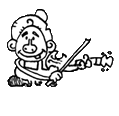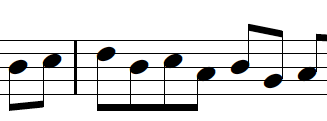Dueling Banjos
Here is a lesson on how to play the melody from the Fortnite dance called Hootenanny. It’s taught by a guest teacher, my friend, and student Toby. It’s his first time giving a fiddle lesson, so be sure to give him a lot of love folks. If you make it to the end you’ll see us bumble our way through the dance.
For those of you not familiar with Fortnite, it’s a popular new multi-player video game. My student Toby is an avid fan of the game and fiddling. So it just made sense that we combine these two awesome things that he loves and make a fiddle video.
A Part, Second quarter
A Part, Third quarter
A Part, Fourth quarter
You’ll recognize the main melody as the tune “Dueling Banjos” from the movie Deliverance.
It was originally written by Arthur “Guitar Boogie” Smith and called “Feudin’ Banjos”. Here’s a fun version from the Andy Griffith show:
Full-length play-along track
If you want to unlock full play-along track, full tabs, and sheet music, then sign up for a free trial membership. It takes less than a minute and will change your life for the better!Click to read the article: Dueling Banjos and the Great Folk Process
Connections
Similar tunes:
Return to Lessons taught by student teachers >>
Leave a Reply
You must be logged in to post a comment.


Great job! Can you post the full song? The link above does not go to it. Thanks!
Hi Terri, which link are you referring to? I’m seeing the full song play along track as well as the full sheet music.
Thanks
Hi Jocelyn, Sorry I just now noticed your reply! Actually, there’s no link or pdf of the full song. Thanks!
Toby did a great job. This was fun to play along with. I like the lay-out for practicing and also the catchy tunes. Great job!
Thanks for saying that. It was super-fun having a guest teacher. I want to do that more soon…